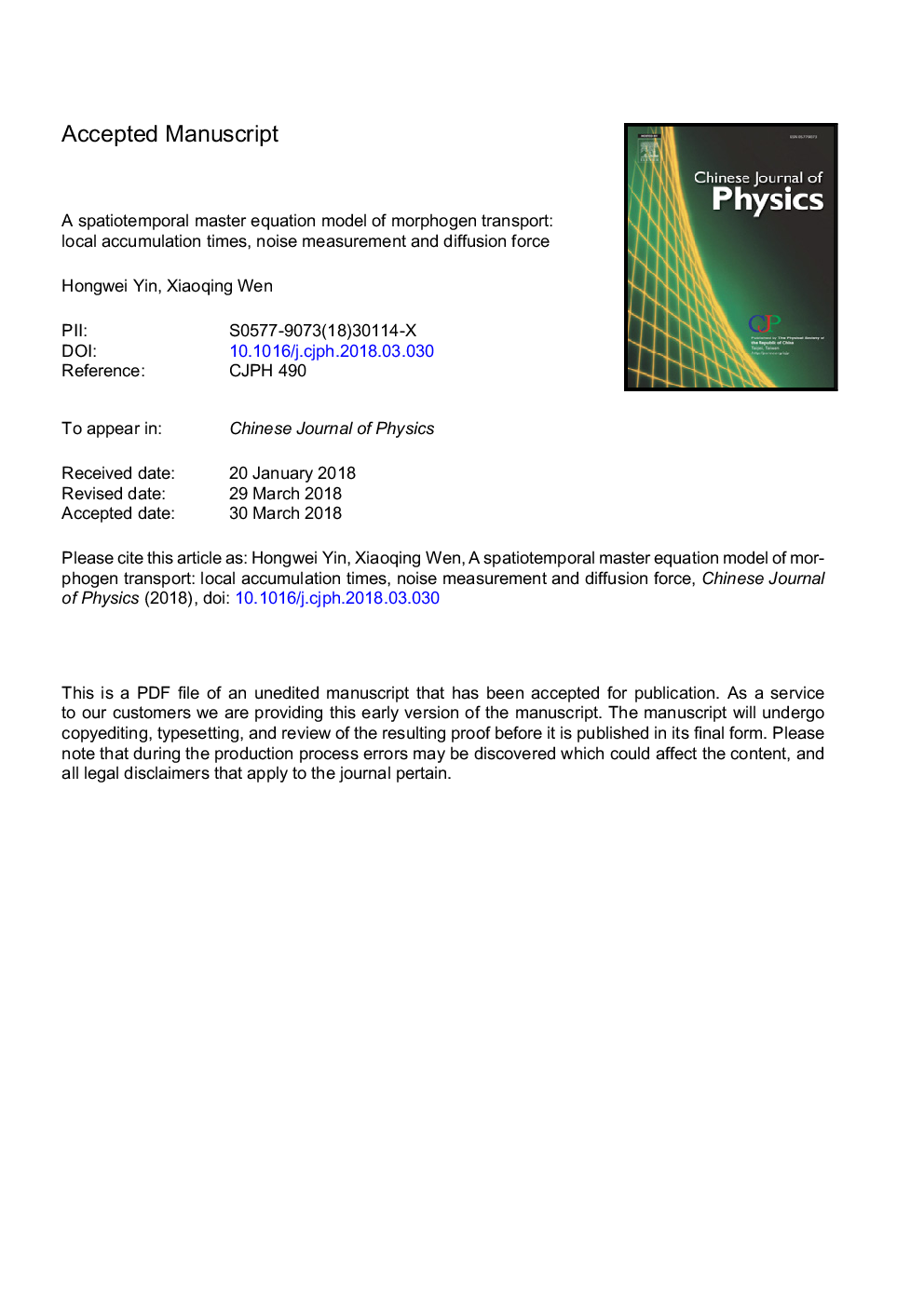| Article ID | Journal | Published Year | Pages | File Type |
|---|---|---|---|---|
| 8145185 | Chinese Journal of Physics | 2018 | 15 Pages |
Abstract
Morphogen, a class of signaling molecules to direct and control pattern formation of cell and tissue, is first synthesized in a local region and then conveyed to other regions or degraded. In the previous studies, this transport process was modeled by deterministic models of ordinary differential equations. In microcosmic environments, however, the process is often affected by stochastic fluctuations (or the noise). It remains unclear how this noise affects morphogen gradients. Here, we build a spatiotemporal master equation model for the process of morphogen transport in a finite developmental field, from which we derive the first-order moment equations of this master equation. We derive the analytical expression of the local accumulation time that the morphogens reach a steady state, and find that this time is nonlinear with respect to the cell positions. We also derive the approximate expressions of the steady-state variances, the Fano factors and the local accumulation time of the variance. Interestingly, we find that the local accumulation time for the variance of the morphogen number is shorter than that of its corresponding second-order moment. Moreover, the noise in the morphogen number is almost not affected by the distance from the cellular position to morphogen source. In addition, we further study some quantities (e.g., potential energy and diffusion force) from the view of physical-chemical mechanisms, and uncover that the diffusion force is a key factor for the formation of the morphogen gradient. Our results provide insights on morphogen diffusion.
Keywords
Related Topics
Physical Sciences and Engineering
Physics and Astronomy
Atomic and Molecular Physics, and Optics
Authors
Hongwei Yin, Xiaoqing Wen,
